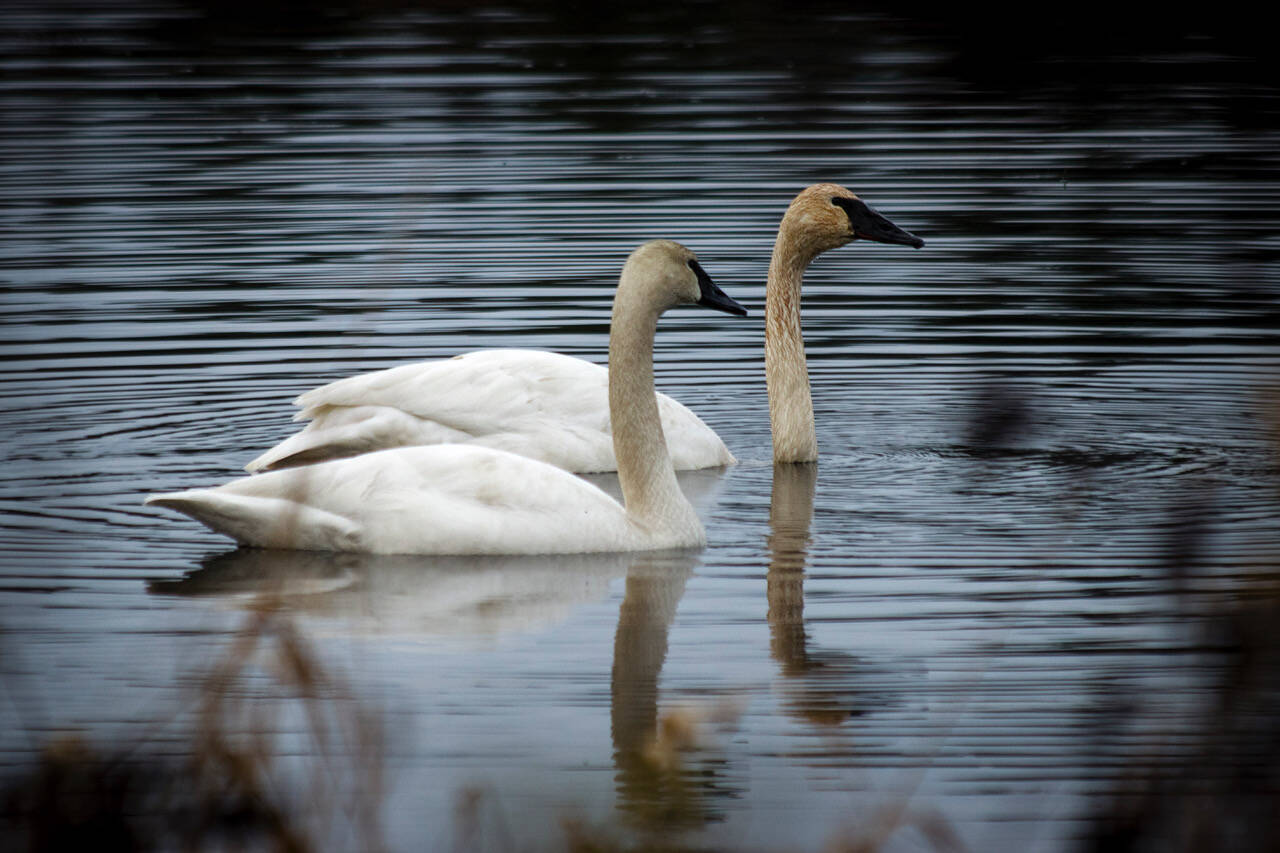The lone trumpeter swan that enjoyed having the run of the wetlands near Cultus Bay Road and was, briefly, joined by a potential mate, has died and will be missed by the community that has grown accustomed to his graceful presence.
Dyanne Sheldon, a restoration ecologist who lives in the area, heard from a neighbor Wednesday morning that the bird had been found dead in a nearby pond. Just one day earlier, it had been seen moving around regularly.
The swan’s body showed no signs that something was amiss – no one had shot the bird and nothing had attacked it. The body has since been delivered to the state Department of Fish and Wildlife to be tested for avian flu.
South Whidbey birders have been eagerly monitoring the bird’s progress since it first appeared in juvenile gray plumage in the fall of 2019. Because of its aggressive territorial behavior, Sheldon explained, it was presumed to be male.
The swan was considered to be something of an oddity, since it didn’t follow a migratory pattern and travel north like other birds. Instead, it seemed content, most likely because it had plenty to eat in its wetlands territory on Whidbey Island.
Around Christmastime last year, a second swan appeared overnight and was thought to be female. It was an exciting new development and birdwatchers hoped for cygnets. Sheldon said if this had happened, the swans would have been the first breeding pair in the state.
“For five to six weeks he was a very happy boy,” Sheldon said.
But the second swan didn’t stick around long, leaving the wetlands towards the end of January. When the female swan left, the solitary remaining swan could be heard making heartsick calls all night.
“I think he thought he found a mate,” Sheldon said. “I’m not sure if she thought she found a mate.”
His sudden death comes as a shock, especially when the cause is still unknown.
Sheldon said if the body is able to be sent back, the Whidbey Audubon Society is interested in adding it to their collection of stuffed specimens that they use for teaching.
“There’s so many people who have stopped to watch this bird on Cultus Bay Road,” she said. “Even people who aren’t typical birdwatchers, it captivated them.”



